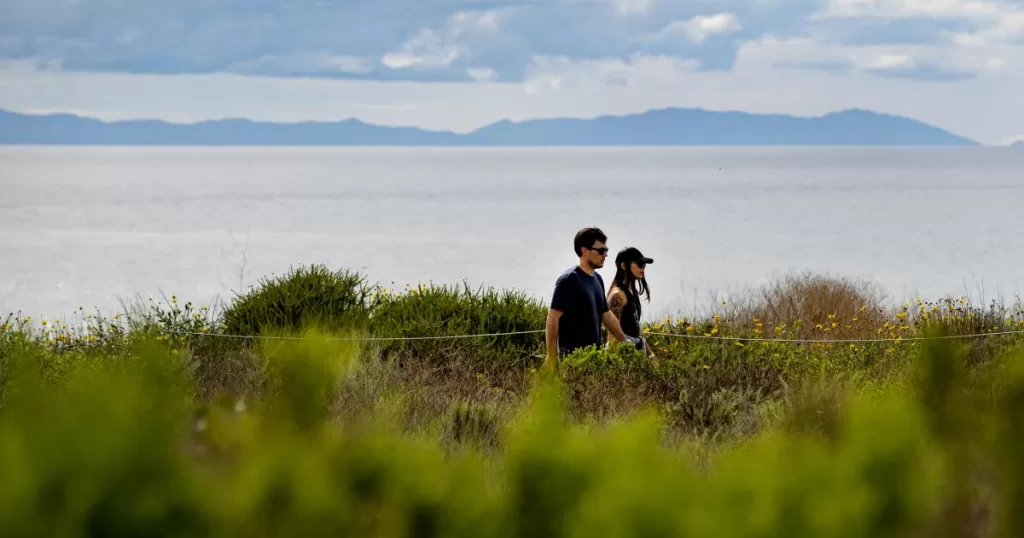Who knew?
The short answer is: hardly anyone.
Over the past 20 years I’ve asked several thousand Californians to name five state parks. Fewer than 5% can do so. And most of these baffled respondents are outdoorsy folks — the kind of people I meet on the trail or at my talks about hiking.
This lack of awareness is more than surprising right now. It’s dangerous.
If Californians can’t name a handful of state parks, they won’t recognize the threat when Sacramento defers investment in the system or — as is inevitably happening again — attempts to cut funding.
Gov. Gavin Newsom’s proposed $291.5 billion budget for the upcoming year would eliminate a $3 million line item for a well-used program that lets (primarily low-income) library card holders check out free passes to state parks. But how many lawmakers or voters are likely to object, when most don’t even remember the state’s hundreds of parks?
The disconnect comes down to name recognition. Many Californians actually know and love these sites but forget that they are state parks: Perhaps you’ve marveled at the giant sequoias in the western Sierra Nevada, but did you know you were in Calaveras Big Trees State Park? Or if you saw coast redwoods near the Oregon border, did you realize you were in Jedediah Smith Redwoods State Park, home of the tallest trees on Earth? And that when you visited palm oases way down south between San Diego and the Salton Sea, you were in Anza-Borrego Desert State Park?
As I’ve quizzed Californians, I find over and over that people remember the good times and even a lot of information about nature and history, but not the names of the parks: where the Gold Rush began (Marshall Gold Discovery State Historic Park), where a famed writer found inspiration (Jack London State Historic Park), where an immigrant community lived and worked (China Camp State Historic Park).
That wonderful weekend in Big Sur? It was really in Pfeiffer Big Sur, Julia Pfeiffer Burns, Limekiln, Andrew Molera and Garrapata state parks. We miss parks hiding in plain sight in the heart of cities, such as Watts Towers in Los Angeles and Old Town San Diego. Perhaps you’ve stopped at Hearst Castle halfway between Los Angeles and San Francisco — another memorable site that people forget is a state park.
These treasures also get short shrift when disaster strikes. Wildfires are reported as “burning the hills near Malibu” not “raging through Malibu Creek, Leo Carrillo and Point Mugu state parks” and as “burning in the mountains near Santa Cruz” not as “devastating iconic Big Basin Redwoods State Park, California’s first state park.”
State parks need many things — more campsites, better outreach, funding commensurate with the size and scope of the system — but what they need first and most of all is to be noticed: by the governor, legislators and the public. The lack of awareness leads to missed opportunities for all Californians to enjoy the parks and a shortage of the kind of financial support and strong stewardship commitment state parks need to thrive.
Such support has never been assured. A century ago, ultra-conservative Gov. Friend William Richardson was hostile to the formation of a state park system, vetoed park legislation and ranted about the waste of taxpayer money. Pro-park forces prevailed. A state park system was established in 1927 and, in a move dripping with irony, included a lovely redwood retreat named “Richardson Grove State Park.”
Flash forward to today, when the library program offering state park passes is under threat. Newsom’s proposal to trim $3 million — to help close a budget deficit of $37.9 billion — continues a history of unfortunate priorities.
The fiscal 2024-25 allocation for the Department of Parks and Recreation is set at $807 million plus a mere $1.1 million for all capital improvement projects across the 280 state park sites. Meanwhile Caltrans, which manages state highways, is slated for a billion-dollar increase, to $17.5 billion.
State parks need and deserve more respect and revenue. Let’s start small — don’t cut the library park pass program, for heaven’s sake — and then think bigger. Rather than increasing Caltrans’ generous (some would say bloated) budget, how about a one-time grant to state parks to address their $1 billion backlog of deferred maintenance and improvement projects?
If more Californians, particularly our policymakers, would notice that the sites they love are state parks, the funding would follow.
John McKinney, author of “Hike California’s State Parks” and two dozen other hiking-themed books, has visited all 280 state parks.
